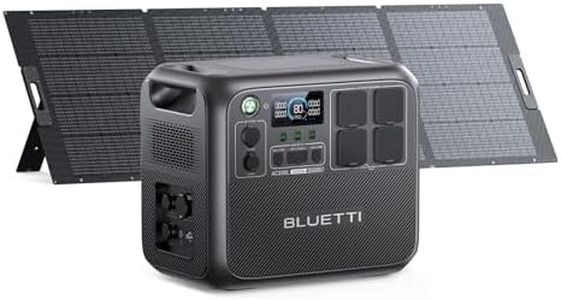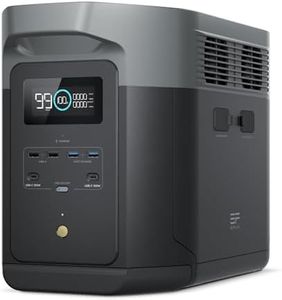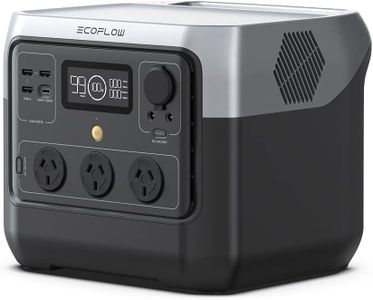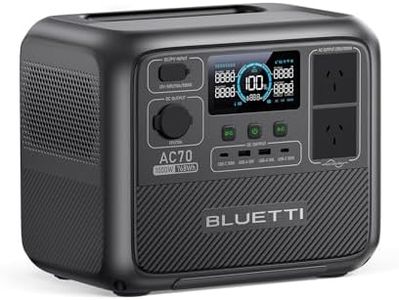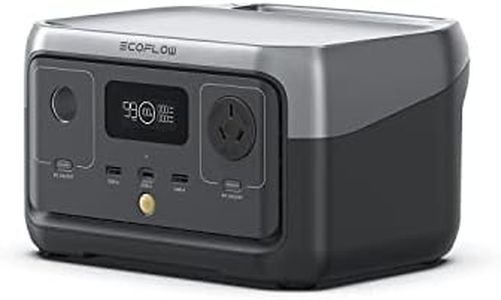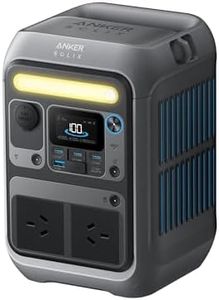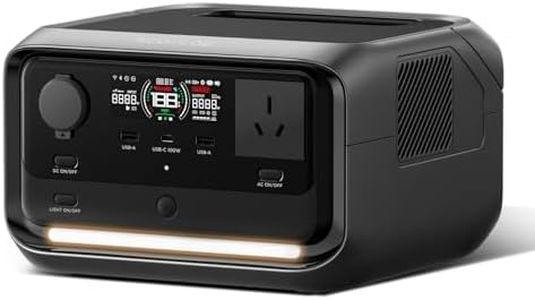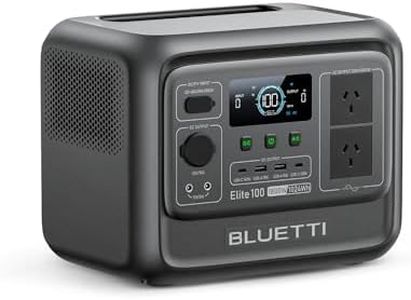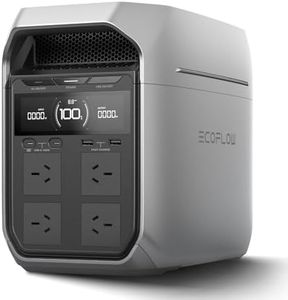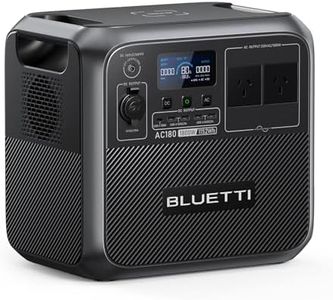We Use CookiesWe use cookies to enhance the security, performance,
functionality and for analytical and promotional activities. By continuing to browse this site you
are agreeing to our privacy policy
10 Best Solar Generators
From leading brands and best sellers available on the web.By clicking on a link to a third party's website, log data is shared with that third party.
Buying Guide for the Best Solar Generators
Choosing a solar generator can feel overwhelming with all the technical terms, but focusing on a few key features will help you find the best fit for your needs. It’s all about matching the power and capabilities of the generator to what you want to run, whether it’s small devices during a camping trip, backup for home essentials during outages, or powering tools off the grid. Understanding the main specifications will guide you toward a reliable and effective solution that makes renewable energy work for you.Battery Capacity (Wh or Ah)Battery capacity tells you how much electricity the solar generator can store and is usually given in watt-hours (Wh) or amp-hours (Ah). It's important because it determines how long you can power your devices before needing a recharge. Lower capacities (under 300Wh) are great for charging phones, cameras, or small lights, while mid-range capacities (300Wh to 1,000Wh) suit laptops, small appliances, or longer outings. High capacities (over 1,000Wh) are aimed at powering major appliances, CPAP machines, or for home backup. You should look for a capacity that comfortably covers the total energy use of the devices you need to keep running most often, for as long as you need.
Inverter Output (Wattage)The inverter output measures how much power (in watts) the generator can deliver at one moment, and it controls what devices you can plug in. Low wattage outputs (up to 300W) are best for small electronics; mid-range outputs (300W to 1,000W) work for TV sets, fans, or mini-fridges. High outputs (above 1,000W) can handle larger equipment like power tools or regular kitchen appliances. Choose a generator with an output that exceeds the maximum combined wattage of the devices you plan to run at the same time.
Solar Input (Wattage Limit)Solar input means how much solar panel power the generator can handle for recharging. This is important because it affects how quickly you can recharge the battery with sunlight. Smaller models (under 100W input) recharge slowly, suitable for light, occasional use. Medium solar inputs (100W-300W) recharge faster and are more practical for regular use. Larger inputs (over 300W) can quickly replenish large batteries, ideal for heavy use or whole-day power. If you want quick recharging or plan to use the generator daily, look for a higher solar input capability.
Port Selection (USB, AC, DC, Car Outlets)The types and number of ports show you what kind of devices you can connect to the generator. Basic generators may have only USB and DC ports for phones and small devices, while more advanced models include AC outlets for regular household appliances and car outlets for 12V appliances. If you have a variety of gadgets or want to plug in several items at once, choose a generator with multiple port types and enough outlets to fit your needs.
Weight and PortabilityWeight and portability affect how easy it is to move the generator around. Compact, lightweight models (under 10 pounds) are great for hiking or travel, while mid-weight units (10-30 pounds) are manageable for car camping or RV trips. Heavier generators (over 30 pounds) are more suited for home backup, but may be harder to transport. Consider how and where you'll be using the generator, and pick a weight that matches your mobility needs.
Charging OptionsBesides solar panels, many solar generators can be charged via wall outlets, car adapters, or other means. This is important for flexibility, especially when sunlight is limited or during emergencies. If you want to be able to recharge in different ways, check for models supporting multiple charging methods. This way, you’ll always have an alternative if solar charging isn’t practical.
